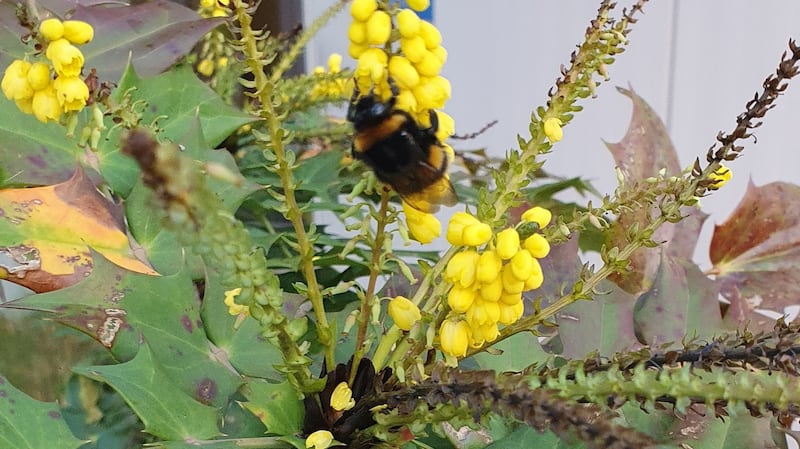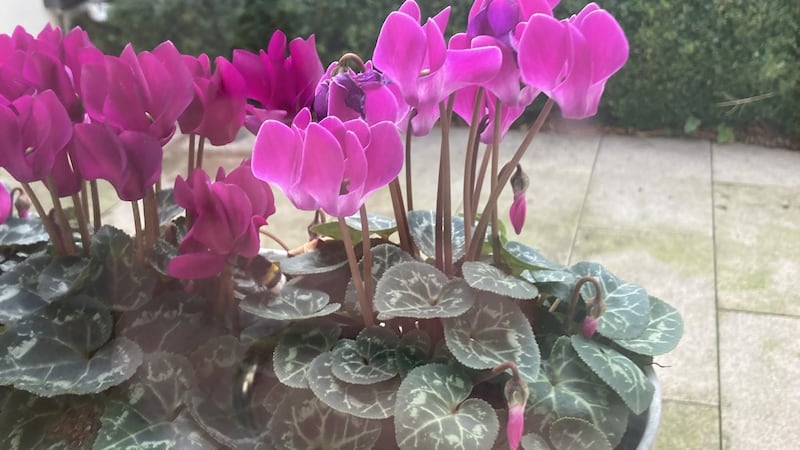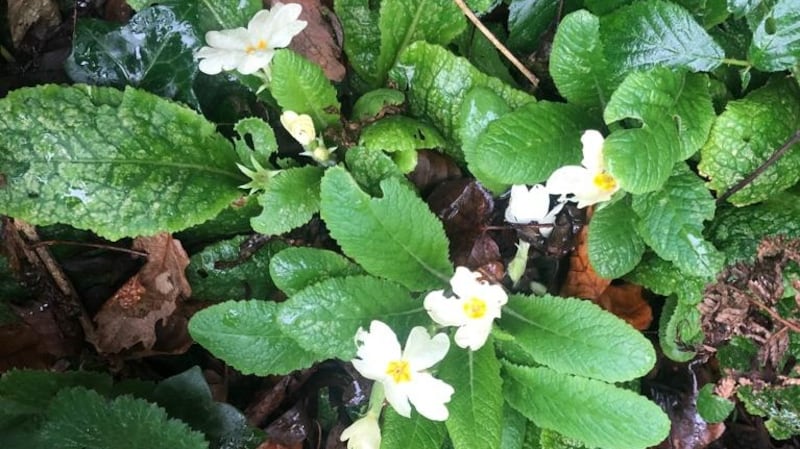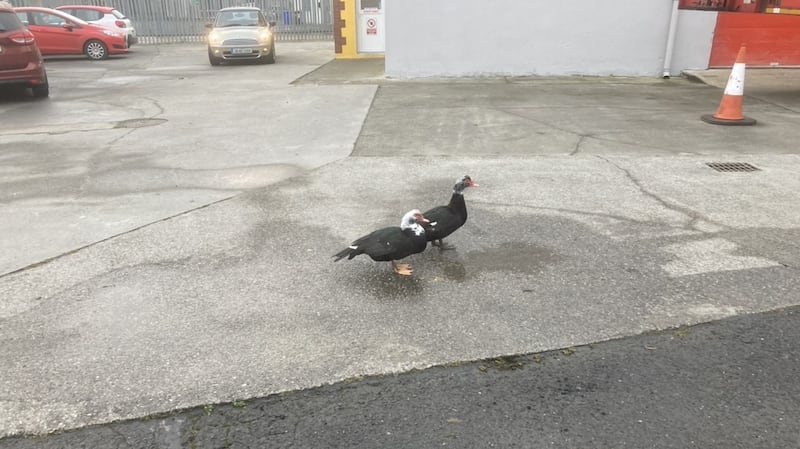There was an abundance of these shellfish on Seapoint beach at Termonfeckin, Co Louth, on December 27th. Most were partially open and closed promptly when picked up! We walk the beach most days and this is the first time we have seen so many in this open state. – Eoin O Flynn
They are queen scallops, which are smaller than St James scallop. They live on the extreme lower shore and in deeper water. These have just recently been washed up and are still alive if they close promptly. They can swim very actively by flapping their shells.
These are busy on the shrubs at work since January 11th. And more than one of them! – Gary Cooke


White-tailed bumblebee queens are the first bumblebees of the year out of hibernation, and this mahonia with its yellow flowers is providing food. Jim Egan saw one in December on his cyclamen. It is very early even for both these species, Bombus terrestris and B. lucerum. The temperature was up to two degrees above normal in December and above average too for the first half of January which was also very sunny. Bees need useful flowers like these to stop them from starving – not daffodils and tulips that have neither pollen nor nectar.
Primroses in flower in north Co Dublin on January 15th. – M Maloney

It’s very early for primroses as well. While the National Biodiversity Data centre have received records of wild primroses for every month of the year, the bulk of them are sent in during March and April.
Saw these two ducks in a car park this week. What are they? – William Telford

They are Muscovy ducks, generally kept as domestic fowl, but some have become feral and are established in the wild.
John Glynn sent in this lovely picture of a barn owl out hunting in west Clare.

Have you a nature query, observation or photo you would like to share with The Irish Times? Submit it, with location of the image, via our website irishtimes.com/eyeonnature



















